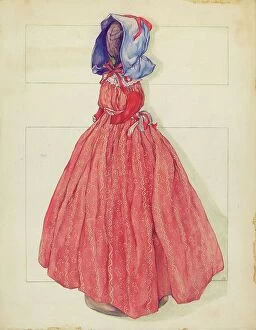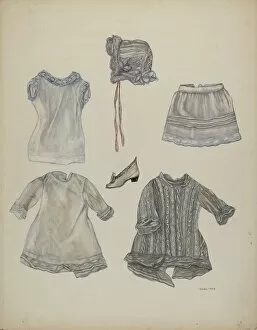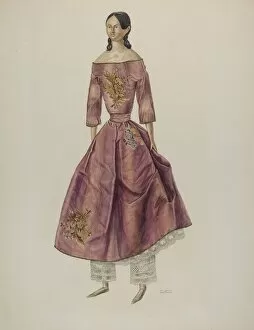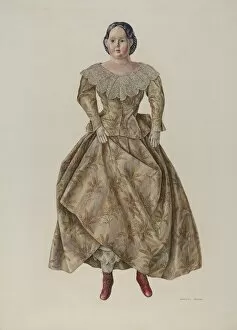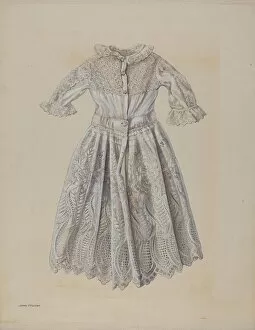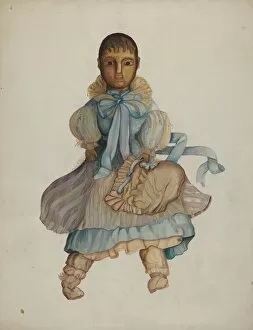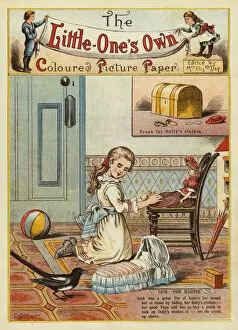Dolls Clothes Collection
Step back in time with a collection of exquisite dolls clothes from the late 1930s and early 1940s
For sale as Licensed Images
Choose your image, Select your licence and Download the media
Step back in time with a collection of exquisite dolls clothes from the late 1930s and early 1940s. These miniature garments, meticulously crafted by talented creators such as Dorothy Harris, Eleanor Gausser, Stanley Mazur, James McLellan, Edna C. Rex, Ray Price, Walter Praefke, Chris Makrenos, and Cora Parker offer a glimpse into the fashion trends of yesteryears. One standout piece is the Doll Wardrobe designed by Dorothy Harris in 1937. This wardrobe showcases her attention to detail and craftsmanship that was highly sought after during this era. Another remarkable creation is the Shaker Dolls Cloak made by Eleanor Gausser in 1939. The cloak's simplicity yet elegance reflects the timeless style of Shaker design. Stanley Mazur's dolls from this period also deserve recognition for their unique features. One doll stands out with its patented Greiner head created around 1940—a true testament to Mazur's innovation and skill as a doll maker. The clothing itself tells stories of fashion evolution during these years. A stunning Doll Dress designed by James McLellan in 1936 captures the essence of feminine grace with its delicate lace detailing and flowing silhouette. Not limited to fabric creations alone are wax dolls like those made by Edna C. Rex in 1937—these lifelike figures were popular among collectors who appreciated their realistic appearance. Walter Praefke's contributions cannot be overlooked either; his dolls from various years showcase his versatility as an artist while maintaining a consistent level of quality craftsmanship throughout each creation. Amongst this diverse collection is also Baltimore Doll crafted by Walter Praefke himself in 1938—a testament to his dedication to capturing regional styles within his work. Chris Makrenos' attention-grabbing Doll Jacket from around 1936 adds an element of sophistication with its intricate embroidery and tailored fit—an ensemble any doll would be proud to wear.






